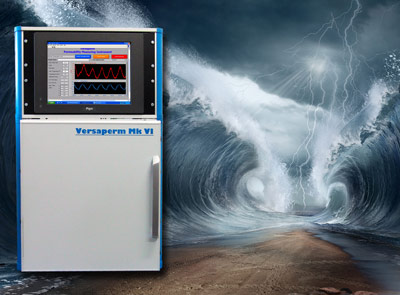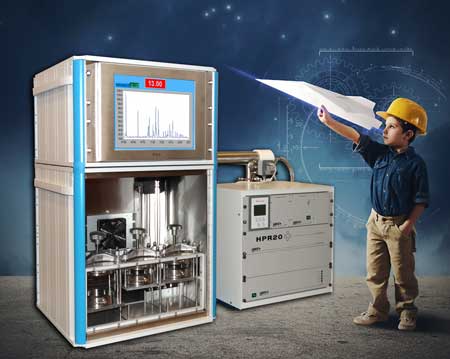

By Christopher Roberts, Director, Versaperm. info@versaperm.com

Valves, seals, barriers and mastics are designed to keep water (and other liquids) out but, sadly, they are not usually very good at keeping gases out. This leads to all sorts of problems, including condensing and being trapped as a liquid on the wrong side of any seal, barrier or inside an enclosure.
The very act of manufacturing, including heating, forming and bending can make the problem worse – often by a factor of four!
Gasses, such as water vapour, O2, CO2 and hydrocarbons can permeate through the materials, seals, coatings or barriers of which enclosures are made. Every single material does this, though the amount that varies with the gas. Silicone rubbers are examples as they are great barriers against liquid water but allow its vapour to pass through virtually unchecked.
Versaperm's VSM (Valves, Seals and Mastics) permeability meter can measure this for almost all industrially used gas, allowing companies to customise materials, designs and manufacturing processes to minimise this problem for their products and systems. The equipment can be used for both product development and quality control.
The permeability problem causes valves, seals and equipment to fail, electronics to malfunction, pipes and valves to leak and enclosures to pool water. This causes a whole raft of problems such as electronic and machinery failure, jamming, rust or contamination. It has even caused missiles to fail and pizzas to go soggy!
 The difficulties that can be caused by vapour permeability range across all materials and many manufacturing processes. This makes a crucial point – just because you know the stated value for the vapour permeability of a material, does not mean you can rely on that value for your production or quality control. Manufacturing and other conditions can change it radically so the only real-world solution is to measure and quality control the permeability of the finished component or product. Surprisingly, even over-tightening the lid on some tubs can actually allow more water vapour to get in!
The difficulties that can be caused by vapour permeability range across all materials and many manufacturing processes. This makes a crucial point – just because you know the stated value for the vapour permeability of a material, does not mean you can rely on that value for your production or quality control. Manufacturing and other conditions can change it radically so the only real-world solution is to measure and quality control the permeability of the finished component or product. Surprisingly, even over-tightening the lid on some tubs can actually allow more water vapour to get in!
Versaperm's range of measurement equipment includes technically advanced systems in both off the shelf and application-customised designs. They are accurate in the PPM (Part Per Million) to PPB range and the intuitive interfaces is easy to use - giving results in as little as 30 minutes for some materials and gases.
The meters can cater for several components, mastics, seals, barriers, laminates or gaskets at the same time. Any part can be tested for permeability – either by using a specially created jig (as with the pizza mentioned earlier!) or by sealing off the other parts with non-permeable materials.
Vapour Permeability is a surprisingly complex subject and seals, mastics, industrial films, multi-layer laminates and coatings are even more so. Results can be counter-intuitive and some seeming solutions may make the problem worse.
However, getting it right can lead to better manufacturing and improved products with longer working lives with better performance. With permeability, what starts out to be a barrier, may well end up as a solution!